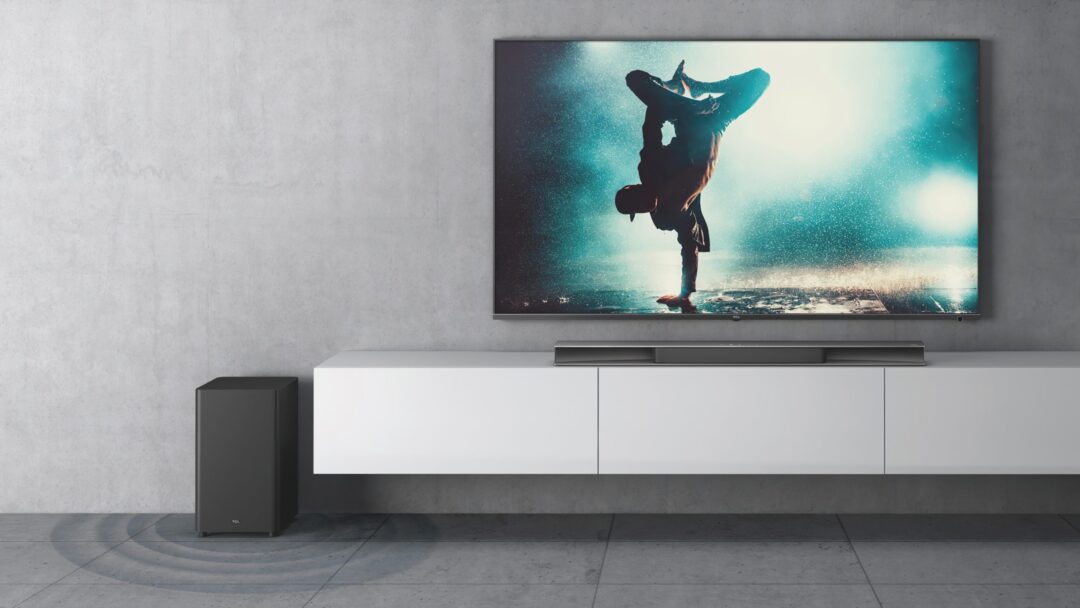An soundbar is a very practical way to improve the TV sound. But even though I personally am very happy that the cheap plastic surround systems have been completely outcompeted by the much simpler soundbars, it is clearly a compromise compared to real home cinema.
Most soundbars use advanced digital processing (DSP) to trick the audience into thinking they are listening to real surround sound. It works fine as long as there is only one seat to optimize for – the sweetspot. But a DSP-heavy soundbar will work worse for those sitting to the side in the middle.
Therefore, TCL takes a different approach with Ray-Danz. Instead of solving everything with the DSP, the designers have instead taken an acoustic approach.
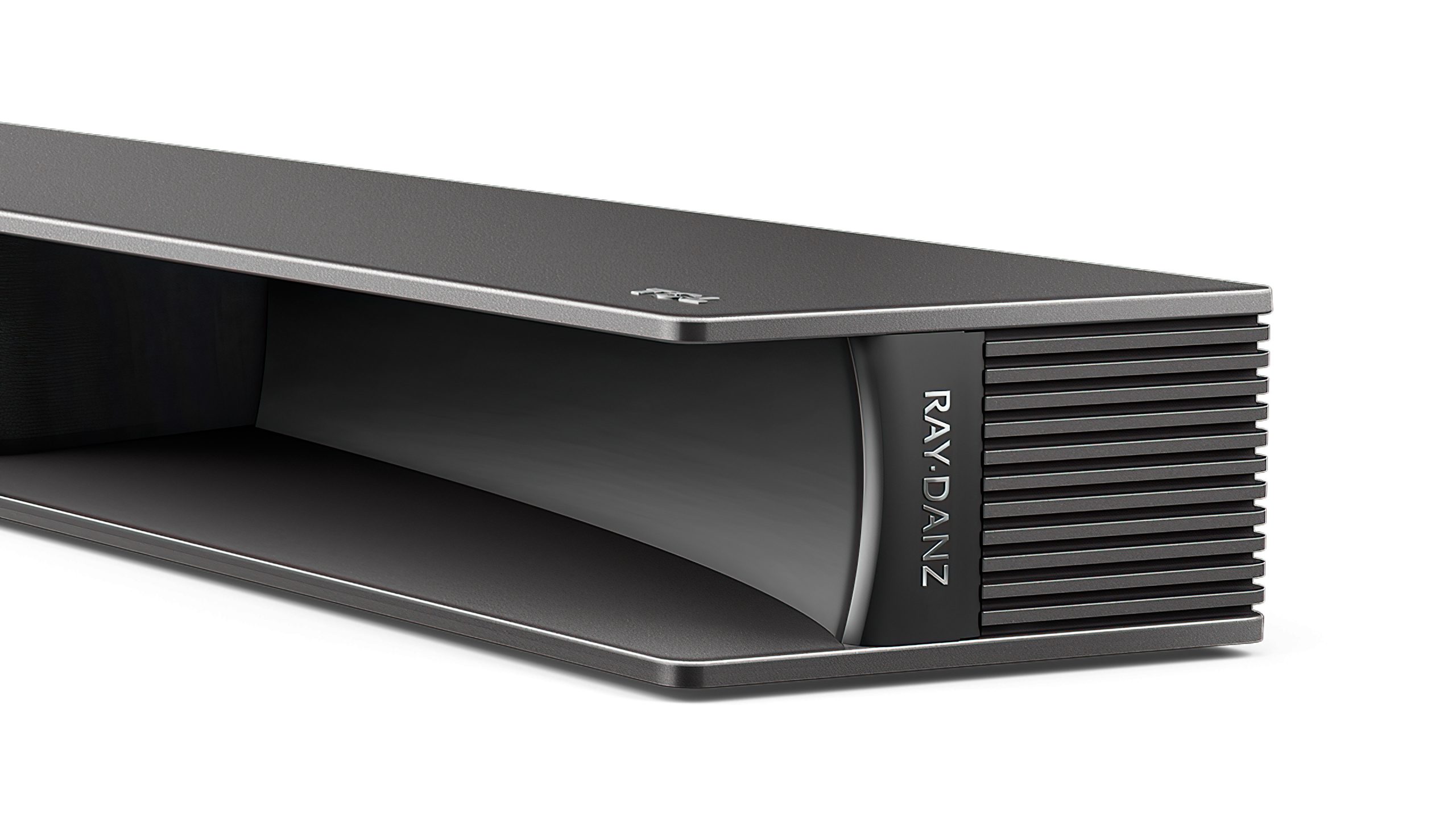
“Dancing sound rays”
As the name implies, it is about controlling the spread of the sound, and sending it in narrower “rays” at different angles into space. Whereupon the sound rays are reflected in from the walls and “dance” around the room. So that when they finally hit the listener’s eardrums, it is from different angles and at different times, depending on which wall they have been most reflected from.
The goal is to create a more natural surround sound, without a lot of DSP that both creates sweetspot but also often results in an unnatural, cold and sharp sound. TCL Ray-Danz should therefore sound more natural, not only with surround sound and film, but also when playing music in stereo.
Three-channel soundbar
Ray-Danz TS9030 is a three-channel soundbar, with a separate midrange and treble in the center for the best possible reproduction of the dialogues. And with two “full tone elements” mounted on each side of the cabinet. The side speakers transmit the sound via their own acoustic lens – or reflectors, as TCL calls them – which then bend the treble and midrange frequencies separately at precisely calculated angles. This gives greater width to the sound image, without the use of DSP.
3D sound
Some DSP must still be used. Especially to try to give the impression of sound coming from above, since this is a soundbar with built-in support for Dolby Atmos. The audio format that places objects in a three-dimensional space, also in height.
No DTS formats are supported, then it will instead be regular stereo PCM audio.
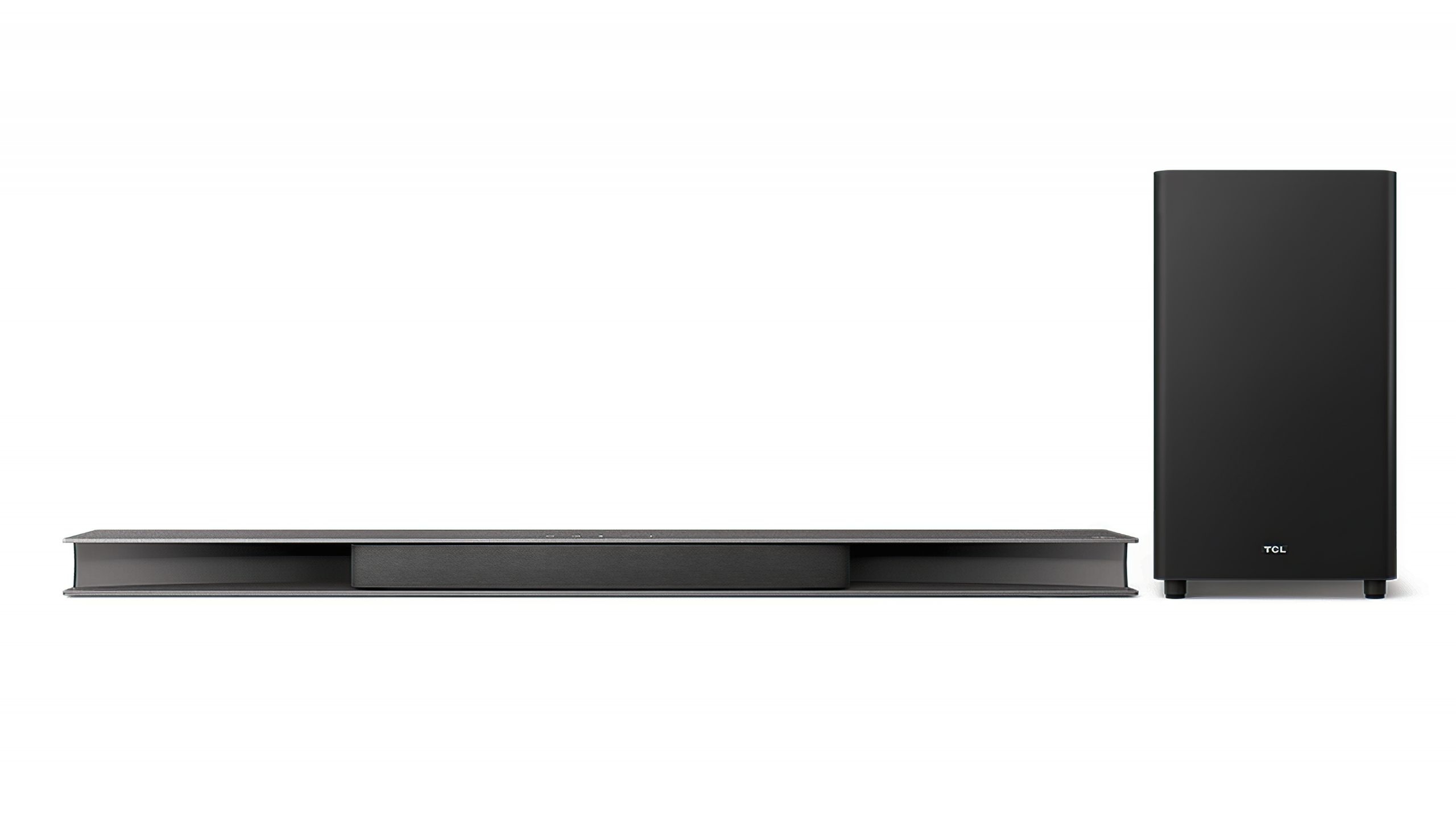
Wireless audio
When you are not going to use the Ray-Danz TS9030 to watch movies, the soundbar can be connected to your home network and become part of a smart home: either via Google Home or Apple HomeKit. It has both Chromecast and AirPlay 2 built-in. There is no microphone, so if you want to control the voice, it must be done either via mobile or a separate smart speaker such as Google Nest Mini .
Setup and ease of use
A soundbar should be easy to set up, and here TCL has hit the mark. If you are not going to wall mount it (it is also nicely possible), just connect it up and place it on the TV bench.
If you want, you can connect to Wi-Fi from your mobile, but you can also just connect it to your TV with HDMI ARC, and use Bluetooth for music. Please note that if you want Dolby Atmos from Blu-ray, you must use the HDMI input on the soundbar as it cannot extract this from the TV. It lacks eARC. However, it can take Atmos from Netflix, which compresses this down to Dolby Digital +. It gets a little technical, but all you need to know is that a 4K Blu-ray player or game console must be connected directly to the soundbar.
I like that the display is so big. You can see from a long distance which input is selected and what kind of audio tracks are being played. Dolby Atmos, for example.
The remote control is clear, where each function – including each input – has a separate button. The way I like it. Should the sound source be anything other than Atmos, you can still press the Vertical Surround button and get the impression of height.
There is also an AV Sync button, should you feel the need to adjust the audio forward or backward to get it in sync with the picture.
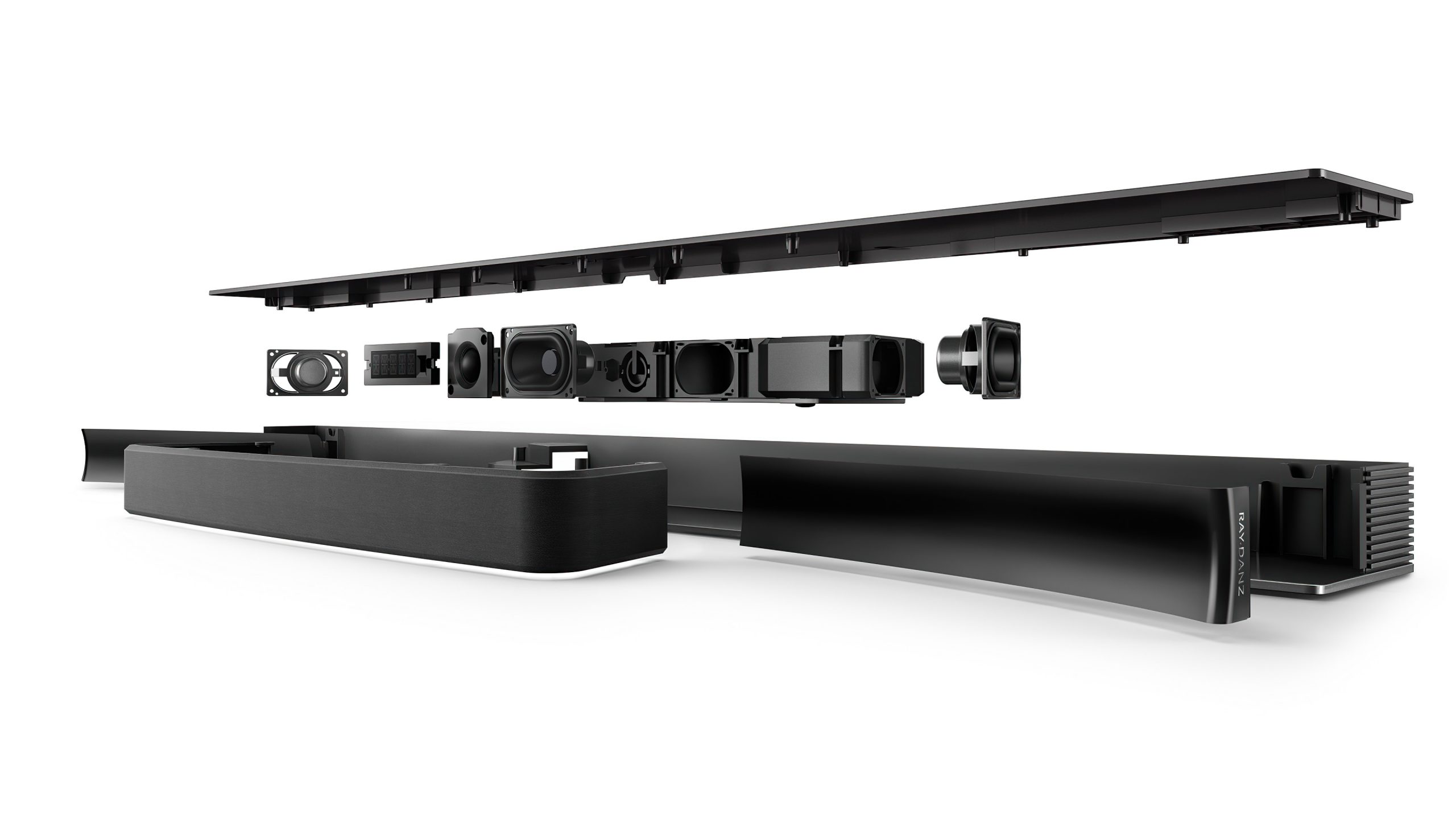
The sound of Ray-Danz TS9030
In terms of sound, the TCL TS9030 boasts a good connection, where the subwoofer sounds like it is a natural part of the sound image. Instead of standing in a corner and rumbling to himself. The dialogues on film have good fullness downwards, and a generally natural sound without sounding masked by the bass in any way.
The impression of surround sound is somewhat limited, even with Atmos sound sources. The soundtrack on the Ready Player One has a significantly more surround feel played through the Sony HT-G700. But TCL has a warmer and more comfortable sound.
The TS9030 is by no means a powder keg. Both the subwoofer and the soundbar give way before it becomes quite engaging enough. If you have a small living room corner and sit 2-3 meters from the TV, it will still be loud enough, and infinitely more engaging than just listening to the sound directly from the TV.
In relation to competing soundbar, it is still generally a bit tame, and I also think there could have been more air at the top here. And despite the fact that the dialogues have their own, dedicated center speaker, these could also have had better clarity and dynamics in my ears.
Music sounds ok, but could have been better. The sound is too “round the edges”, I miss the attack. Female voices have too little impact in the midrange and too little air in the top, and instruments lack complexity in the tone structure.
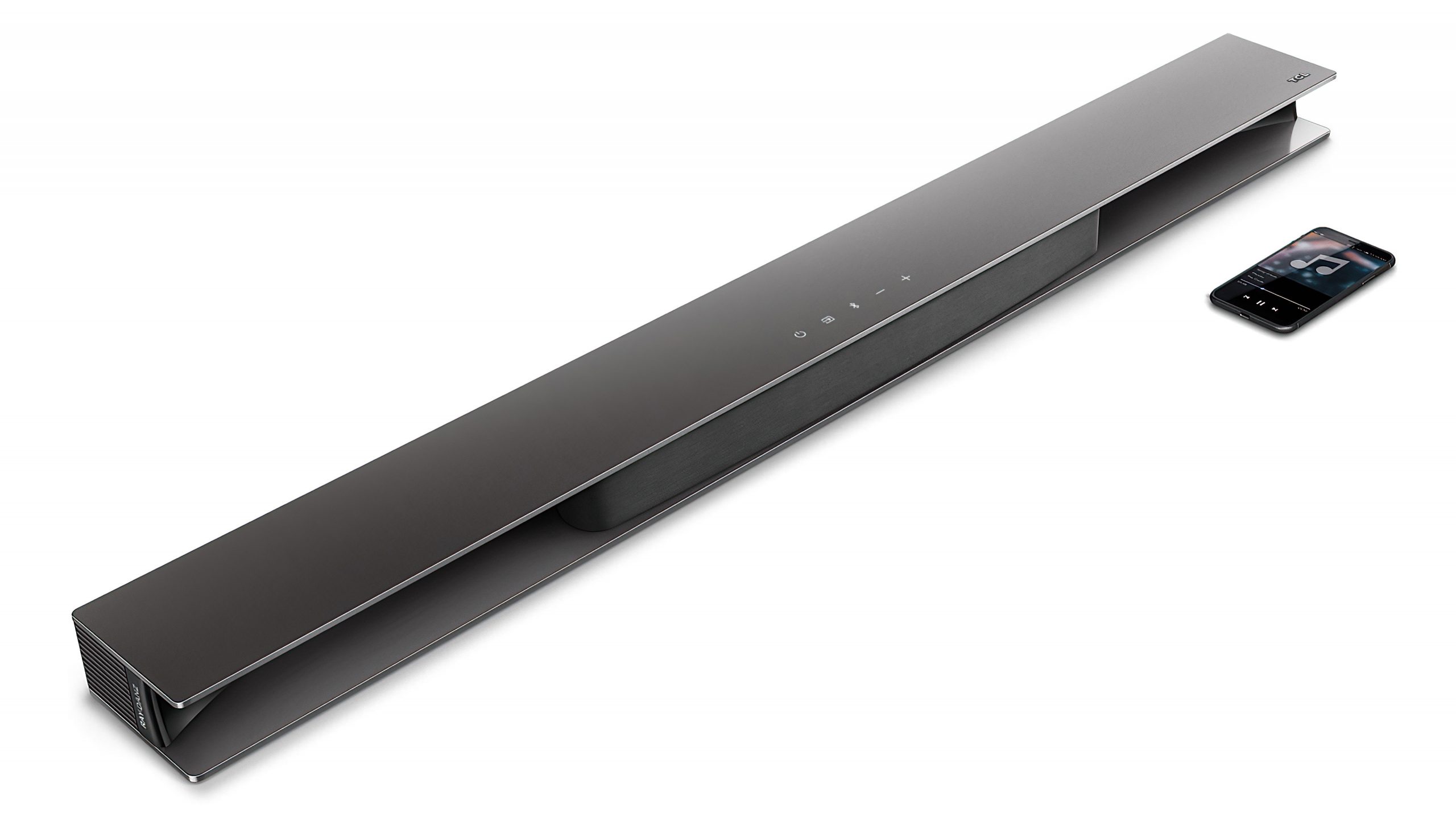
Conclusion
TCL Ray-Danz TS9030 is an exciting soundbar that uses acoustic manipulation rather than digital processing, to provide the widest possible sound image. The advantage is that more people can enjoy the big sound picture, where DSP-based soundbar do not work particularly well outside the “sweetspot” in the middle.
The soundbar is trouble-free and easy to use. It has a rich reproduction of film and music, and it’s a little cool that the soundscape is larger for more places in the room.
Although the surround sound will never be as loud as with some other competitors, it is not the main problem. The relaxed dynamics and anonymous subwoofer are the biggest appeal. The sound lacks a bit of attack on both film and music, and there is a lack of air and details upwards.
The TCL soundbar has a sound picture that is easy to understand. It’s easy, straightforward and hassle-free. But I miss more.

We think
Good tonal connection, the large display is easy to read from a distance. Multiple seats can enjoy a larger soundscape. Loose dynamics, fidgety subwoofer and there are other soundbars that give a more convincing surround sound feeling.
€
Specifications
- Width corresponds to screen size: 48 ”
- HDMI: (2.0) 1 in / 1 out (ARC)
- Digital input: Optical, USB-A
- Network: Wi-Fi (2.4 / 5 GHz)
- Trådløst: Chromecast, AirPlay 2, Bluetooth
- Voice control: Passive only (Assistant, Siri)
- Analog input : 3.5 mm AUX
- Subwoofer: Wireless 6.5 ″
- Mål: 105 x 5,8 x 11 cm (B x H x D)
- Color: Black with dark gray fabric
- Web: tcl.com
